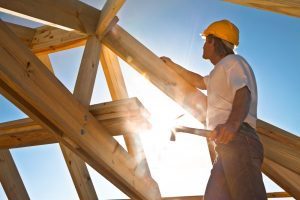
Residential construction fell 4.5% in April to $536.8 billion, according to the U.S. Census Bureau. [1]
The March estimate was revised to $561.9 billion.
The Bureau reports that new single-family home construction fell from 300.8 million in March to $280.9 million in April—a 6.6% month-over-month decline. This, however, is still 4.5% higher than April 2019’s total of $268.7 million.
Total construction spending in April 2020 was at a seasonally adjusted rate of $1.34 billion—2.9% below the revised March estimate of $1.38 billion. April’s estimate is 3% above April 2019’s estimate of 1.30 billion.
Diane Swonk, Chief Economist for Grant Thorton, said on Twitter that single-family constriction is the “best bet” for a rebound.
“The near-term future of commercial real estate is much more precarious given social distancing and extended work at home edicts,” she said.
According to the National Association of Homebuilders [2]Construction Spending Index illustrates the growth in single-family construction and home improvement from the second half of 2019 to February 2020, before COVID-19 hit the U.S. economy.
Danielle Hale, Chief Economist, realtor.com, said COVID-19 has reduced economic activity across the board, and “housing activity hasn’t been an exception.”
“With single-family housing starts down roughly 25% from both a year ago and from March, it's clear that the reduction in activity is leading to less spending,” she said. “However, because we still see the number of buyers generally outpacing the number of homes available for sale, prices have held up, and this has helped minimize the downturn in residential construction spending.”
Hale added that many indicators show housing has started to pick up, including mortgage application and asking-price growth.
“We expect that this normalization will carry over into residential construction numbers which will look better in the second half of 2020,” Hale said. “After an extended period of time at home, buyers have shown interest in tackling home improvement projects [3] and a new appreciation for space that could further increase residential remodeling spending.”